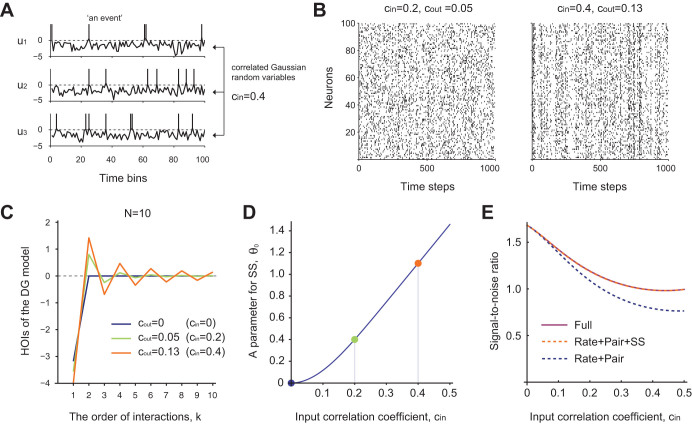Figure 6. The ensemble activity simulated by the Dichotomized Gaussian (DG) model exhibits alternating signs of HOIs depending on successive orders of interaction.
(A) Illustration of a DG model of 3 neurons. The traces in each panel
represent correlated input variables,  at different time steps. The inputs are sampled from a
multivariate Gaussian distribution,
at different time steps. The inputs are sampled from a
multivariate Gaussian distribution,  , with mean vector
, with mean vector  and
covariance
and
covariance  (See Methods). Here
we assume that the mean vector contains the same scalar element,
(See Methods). Here
we assume that the mean vector contains the same scalar element,  , in order to yield the activity
probability
, in order to yield the activity
probability  , a value close to
the empirically observed average activity rate (0.039 per 400 ms
window). The off-diagonal elements of
, a value close to
the empirically observed average activity rate (0.039 per 400 ms
window). The off-diagonal elements of  are all fixed at
are all fixed at  . The
vertical lines above 0 in each panel mark the time steps at which an input
crosses the threshold. (B) Simulation of the DG model with 100 neurons with
weak (Left) and strong (Right) input correlations. The weak input
correlation (
. The
vertical lines above 0 in each panel mark the time steps at which an input
crosses the threshold. (B) Simulation of the DG model with 100 neurons with
weak (Left) and strong (Right) input correlations. The weak input
correlation ( ) in the Left panel
yields a weak correlation coefficient (
) in the Left panel
yields a weak correlation coefficient ( ) of output binary variables, whereas the strong input correlation
(
) of output binary variables, whereas the strong input correlation
( ) in the Right panel yields
a stronger correlation coefficient (
) in the Right panel yields
a stronger correlation coefficient ( ) of output binary variables. (C) The HOIs of a small population
) of output binary variables. (C) The HOIs of a small population
 from the DG model shows
clear alternation of signs as the order of interaction
from the DG model shows
clear alternation of signs as the order of interaction  increases except for
increases except for  . Negative interactions occur at odd
. Negative interactions occur at odd  and positive interactions occur
at even
and positive interactions occur
at even  . (D) The parameter of
SS,
. (D) The parameter of
SS,  , as a function of input
correlation coefficient,
, as a function of input
correlation coefficient,  . The
dots marked in color represent
. The
dots marked in color represent  at
at  , 0.2, and 0.4. (E) The
signal-to-noise ratio of the input correlation coefficient,
, 0.2, and 0.4. (E) The
signal-to-noise ratio of the input correlation coefficient,  , as a function of
, as a function of  in the population activity of the DG
model (The solid purple line). The dotted lines are signal-to-ratios in the
subset features of the population activity (blue: the activity rates of
individual and pairwise neurons; orange: the activity rates of individual
and pairwise neurons plus the SS rate).
in the population activity of the DG
model (The solid purple line). The dotted lines are signal-to-ratios in the
subset features of the population activity (blue: the activity rates of
individual and pairwise neurons; orange: the activity rates of individual
and pairwise neurons plus the SS rate).

